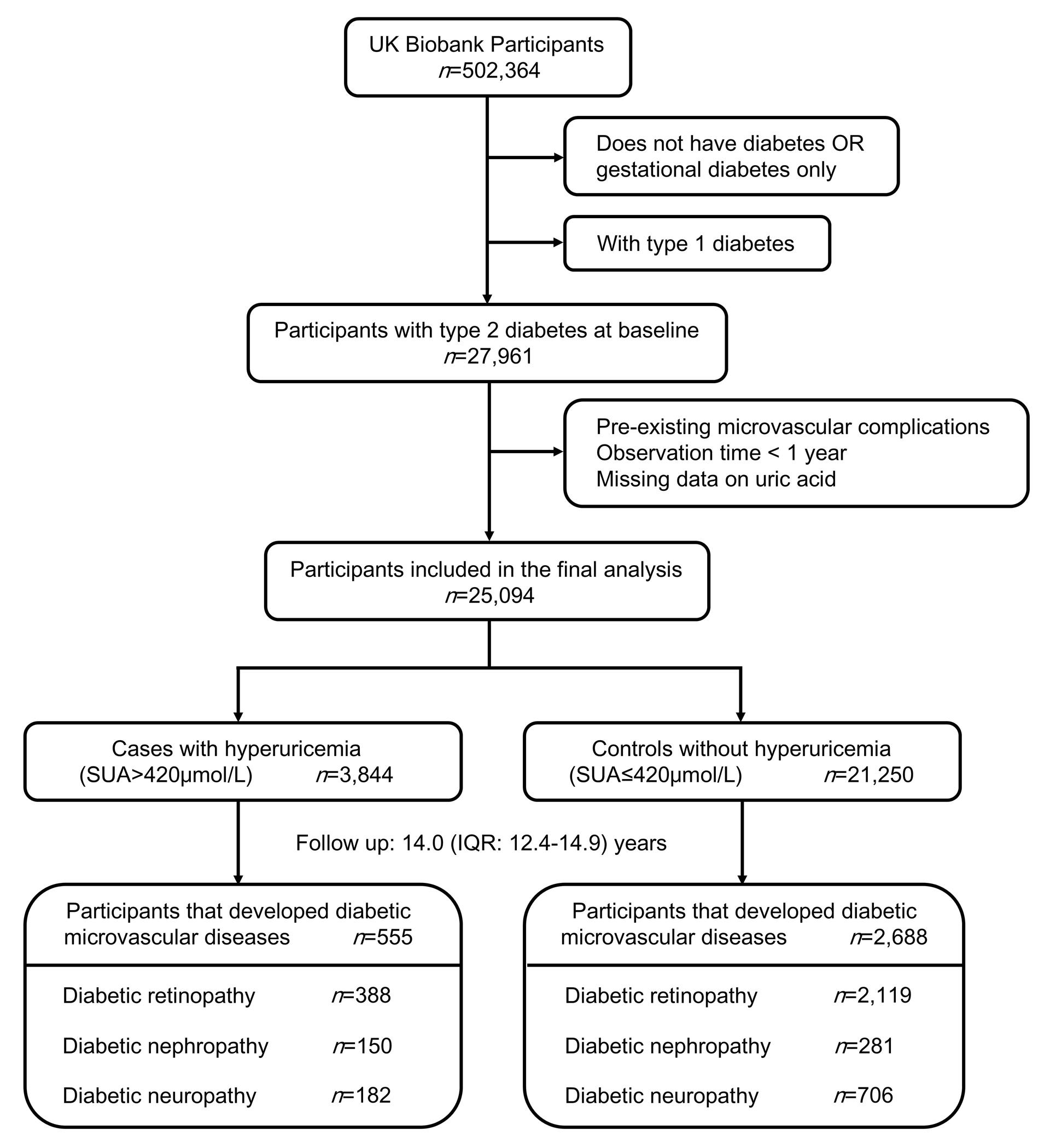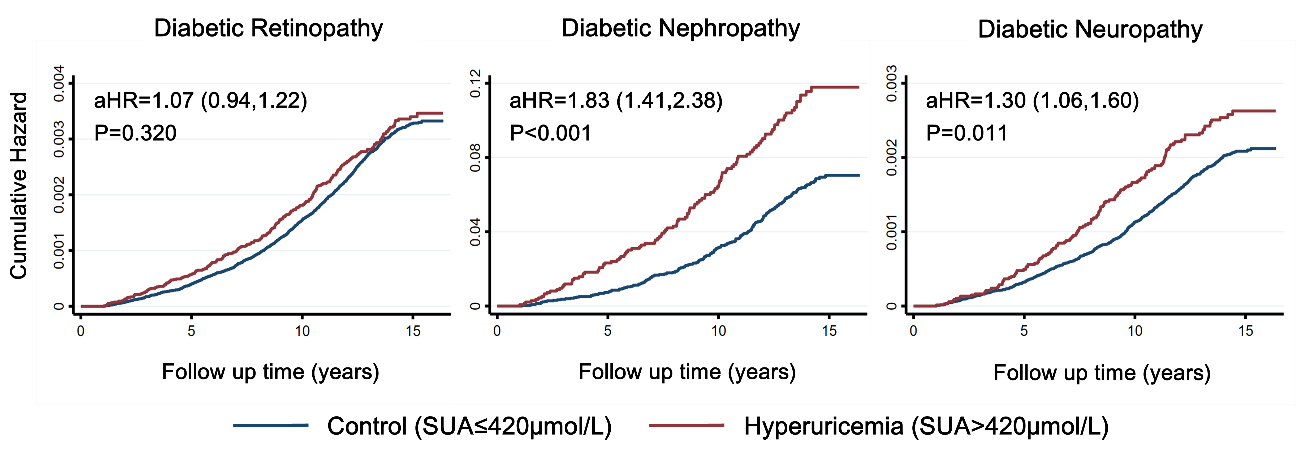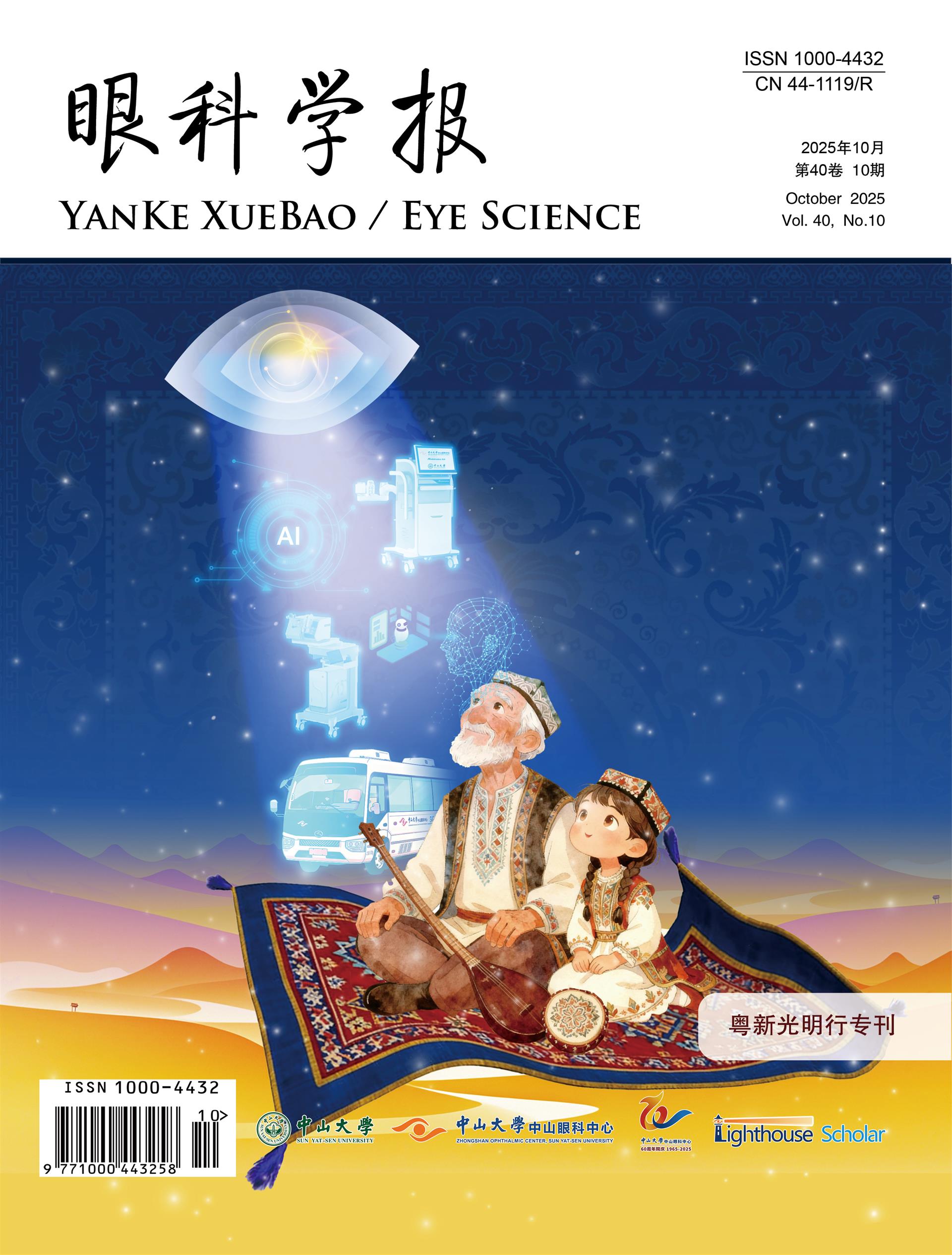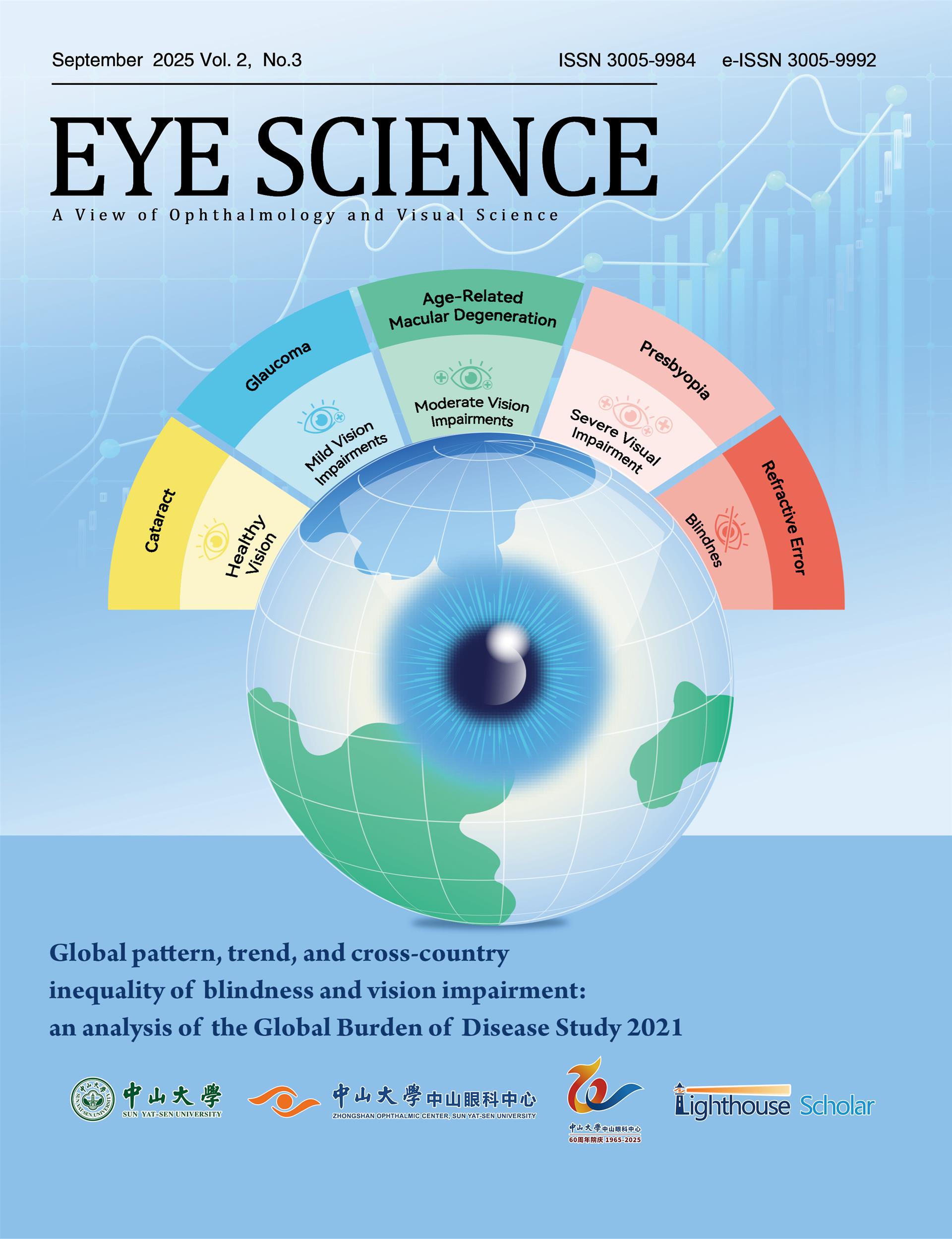1、Sun H, Saeedi P, Karuranga S, et al. IDF Diabetes Atlas: Global, regional and country-level diabetes prevalence estimates for 2021 and projections for 2045. Diabetes Res Clin Pract. 2022, 183: 109119. DOI: 10.1016/j.diabres.2021.109119. Sun H, Saeedi P, Karuranga S, et al. IDF Diabetes Atlas: Global, regional and country-level diabetes prevalence estimates for 2021 and projections for 2045. Diabetes Res Clin Pract. 2022, 183: 109119. DOI: 10.1016/j.diabres.2021.109119.
2、Chen HY, Kuo S, Su PF, et al. Health care costs associated with macrovascular, microvascular, and metabolic complications of type 2 diabetes across time: estimates from a population-based cohort of more than 0.8 million individuals with up to 15 years of follow-up. Diabetes Care. 2020, 43(8): 1732-1740. DOI: 10.2337/dc20-0072. Chen HY, Kuo S, Su PF, et al. Health care costs associated with macrovascular, microvascular, and metabolic complications of type 2 diabetes across time: estimates from a population-based cohort of more than 0.8 million individuals with up to 15 years of follow-up. Diabetes Care. 2020, 43(8): 1732-1740. DOI: 10.2337/dc20-0072.
3、Litwak L, Goh SY, Hussein Z, et al. Prevalence of diabetes complications in people with type 2 diabetes mellitus and its association with baseline characteristics in the multinational A1chieve study. Diabetol Metab Syndr. 2013, 5(1): 57. DOI: 10.1186/1758-5996-5-57. Litwak L, Goh SY, Hussein Z, et al. Prevalence of diabetes complications in people with type 2 diabetes mellitus and its association with baseline characteristics in the multinational A1chieve study. Diabetol Metab Syndr. 2013, 5(1): 57. DOI: 10.1186/1758-5996-5-57.
4、Johnson RJ, Bakris GL, Borghi C, et al. Hyperuricemia, acute and chronic kidney disease, hypertension, and cardiovascular disease: report of a scientific workshop organized by the national kidney foundation. Am J Kidney Di. 2018, 71(6): 851-865. DOI: 10.1053/j.ajkd.2017.12.009. Johnson RJ, Bakris GL, Borghi C, et al. Hyperuricemia, acute and chronic kidney disease, hypertension, and cardiovascular disease: report of a scientific workshop organized by the national kidney foundation. Am J Kidney Di. 2018, 71(6): 851-865. DOI: 10.1053/j.ajkd.2017.12.009.
5、Liang D, Zhu Q, He Y, et al. The interaction between hyperuricemia and low-density lipoprotein cholesterol increases the risk of 1-year post-discharge all-cause mortality in ST-segment elevation myocardial infarction patients. Nutr Metab Cardiovasc Dis. 2023, 33(1): 133-140. DOI: 10.1016/j.numecd.2022.09.011. Liang D, Zhu Q, He Y, et al. The interaction between hyperuricemia and low-density lipoprotein cholesterol increases the risk of 1-year post-discharge all-cause mortality in ST-segment elevation myocardial infarction patients. Nutr Metab Cardiovasc Dis. 2023, 33(1): 133-140. DOI: 10.1016/j.numecd.2022.09.011.
6、Zhang M, Zhu X, Wu J, et al. Prevalence of hyperuricemia among Chinese adults: findings from two nationally representative cross-sectional surveys in 2015-16 and 2018-19. Front Immunol. 2022, 12: 791983. DOI: 10.3389/fimmu.2021.791983. Zhang M, Zhu X, Wu J, et al. Prevalence of hyperuricemia among Chinese adults: findings from two nationally representative cross-sectional surveys in 2015-16 and 2018-19. Front Immunol. 2022, 12: 791983. DOI: 10.3389/fimmu.2021.791983.
7、Chen-Xu M, Yokose C, Rai SK, et al. Contemporary prevalence of gout and hyperuricemia in the United States and decadal trends: the national health and nutrition examination survey, 2007–2016. Arthritis Rheumatol. 2019, 71(6): 991-999. DOI: 10.1002/art.40807. Chen-Xu M, Yokose C, Rai SK, et al. Contemporary prevalence of gout and hyperuricemia in the United States and decadal trends: the national health and nutrition examination survey, 2007–2016. Arthritis Rheumatol. 2019, 71(6): 991-999. DOI: 10.1002/art.40807.
8、Ting K, Gill TK, Keen H, et al. Prevalence and associations of gout and hyperuricaemia: results from an Australian population-based study. Intern Med J. 2016, 46(5): 566-573. DOI: 10.1111/imj.13006. Ting K, Gill TK, Keen H, et al. Prevalence and associations of gout and hyperuricaemia: results from an Australian population-based study. Intern Med J. 2016, 46(5): 566-573. DOI: 10.1111/imj.13006.
9、Guo Y, Liu S, Xu H. Uric acid and diabetic retinopathy: a systematic review and meta-analysis. Front Public Health. 2022, 10: 906760. DOI: 10.3389/fpubh.2022.906760. Guo Y, Liu S, Xu H. Uric acid and diabetic retinopathy: a systematic review and meta-analysis. Front Public Health. 2022, 10: 906760. DOI: 10.3389/fpubh.2022.906760.
10、Johnson%20RJ%2C%20Nakagawa%20T%2C%20Jalal%20D%2C%20et%20al.%20Uric%20acid%20and%20chronic%20kidney%20disease%3A%20which%20is%20chasing%20which%3F%20Nephrol%20Dial%20Transplant.%202013%2C%2028(9)%3A%202221-2228.%20DOI%3A%2010.1093%2Fndt%2Fgft029.%20Johnson%20RJ%2C%20Nakagawa%20T%2C%20Jalal%20D%2C%20et%20al.%20Uric%20acid%20and%20chronic%20kidney%20disease%3A%20which%20is%20chasing%20which%3F%20Nephrol%20Dial%20Transplant.%202013%2C%2028(9)%3A%202221-2228.%20DOI%3A%2010.1093%2Fndt%2Fgft029.%20
11、De Cosmo S, Viazzi F, Pacilli A, et al. Serum uric acid and risk of CKD in type 2 diabetes. Clin J Am Soc Nephrol. 2015, 10(11): 1921-1929. DOI: 10.2215/cjn.03140315. De Cosmo S, Viazzi F, Pacilli A, et al. Serum uric acid and risk of CKD in type 2 diabetes. Clin J Am Soc Nephrol. 2015, 10(11): 1921-1929. DOI: 10.2215/cjn.03140315.
12、Radcliffe NJ, Seah JM, Clarke M, et al. Clinical predictive factors in diabetic kidney disease progression. J Diabetes Investig. 2017, 8(1): 6-18. DOI: 10.1111/jdi.12533. Radcliffe NJ, Seah JM, Clarke M, et al. Clinical predictive factors in diabetic kidney disease progression. J Diabetes Investig. 2017, 8(1): 6-18. DOI: 10.1111/jdi.12533.
13、Yu S, Chen Y, Hou X, et al. Serum uric acid levels and diabetic peripheral neuropathy in type 2 diabetes: a systematic review and meta-analysis. Mol Neurobiol. 2016, 53(2): 1045-1051. DOI: 10.1007/s12035-014-9075-0. Yu S, Chen Y, Hou X, et al. Serum uric acid levels and diabetic peripheral neuropathy in type 2 diabetes: a systematic review and meta-analysis. Mol Neurobiol. 2016, 53(2): 1045-1051. DOI: 10.1007/s12035-014-9075-0.
14、Kaewput W, Thongprayoon C, Rangsin R, et al. The association between serum uric acid and peripheral neuropathy in patients with type 2 diabetes mellitus: a multicenter nationwide CrossSectional study. Korean J Fam Med. 2020, 41(3): 189-194. DOI: 10.4082/kjfm.18.0205. Kaewput W, Thongprayoon C, Rangsin R, et al. The association between serum uric acid and peripheral neuropathy in patients with type 2 diabetes mellitus: a multicenter nationwide CrossSectional study. Korean J Fam Med. 2020, 41(3): 189-194. DOI: 10.4082/kjfm.18.0205.
15、Zhang W, Chen L, Lou M. Association of elevated serum uric acid with nerve conduction function and peripheral neuropathy stratified by gender and age in type 2 diabetes patients. Brain Sci. 2022, 12(12): 1704. DOI: 10.3390/brainsci12121704. Zhang W, Chen L, Lou M. Association of elevated serum uric acid with nerve conduction function and peripheral neuropathy stratified by gender and age in type 2 diabetes patients. Brain Sci. 2022, 12(12): 1704. DOI: 10.3390/brainsci12121704.
16、Papanas N, Katsiki N, Papatheodorou K, et al. Peripheral neuropathy is associated with increased serum levels of uric acid in type 2 diabetes mellitus. Angiology. 2011, 62(4): 291-295. DOI: 10.1177/0003319710394164. Papanas N, Katsiki N, Papatheodorou K, et al. Peripheral neuropathy is associated with increased serum levels of uric acid in type 2 diabetes mellitus. Angiology. 2011, 62(4): 291-295. DOI: 10.1177/0003319710394164.
17、Elafros MA, Andersen H, Bennett DL, et al. Towards prevention of diabetic peripheral neuropathy: clinical presentation, pathogenesis, and new treatments. Lancet Neurol. 2022, 21(10): 922-936. DOI: 10.1016/S1474-4422(22)00188-0.Elafros MA, Andersen H, Bennett DL, et al. Towards prevention of diabetic peripheral neuropathy: clinical presentation, pathogenesis, and new treatments. Lancet Neurol. 2022, 21(10): 922-936. DOI: 10.1016/S1474-4422(22)00188-0.
18、Sudlow C, Gallacher J, Allen N, et al. UK biobank: an open access resource for identifying the causes of a wide range of complex diseases of middle and old age. PLoS Med. 2015, 12(3): e1001779. DOI: 10.1371/journal.pmed.1001779. Sudlow C, Gallacher J, Allen N, et al. UK biobank: an open access resource for identifying the causes of a wide range of complex diseases of middle and old age. PLoS Med. 2015, 12(3): e1001779. DOI: 10.1371/journal.pmed.1001779.
19、Eastwood SV, Mathur R, Atkinson M, et al. Algorithms for the capture and adjudication of prevalent and incident diabetes in UK biobank. PLoS One. 2016, 11(9): e0162388. DOI: 10.1371/journal.pone.0162388. Eastwood SV, Mathur R, Atkinson M, et al. Algorithms for the capture and adjudication of prevalent and incident diabetes in UK biobank. PLoS One. 2016, 11(9): e0162388. DOI: 10.1371/journal.pone.0162388.
20、Zhang Y, Cai M, Dilimulati D, et al. Correlation between serum uric acid and body fat distribution in patients with polycystic ovary syndrome. Front Endocrinol (Lausanne). 2022, 12: 782808. DOI: 10.3389/fendo.2021.782808. Zhang Y, Cai M, Dilimulati D, et al. Correlation between serum uric acid and body fat distribution in patients with polycystic ovary syndrome. Front Endocrinol (Lausanne). 2022, 12: 782808. DOI: 10.3389/fendo.2021.782808.
21、Topless RKG, Major TJ, Florez JC, et al. The comparative effect of exposure to various risk factors on the risk of hyperuricaemia: diet has a weak causal effect. Arthritis Res Ther. 2021, 23(1): 75. DOI: 10.1186/s13075-021-02444-8.Topless RKG, Major TJ, Florez JC, et al. The comparative effect of exposure to various risk factors on the risk of hyperuricaemia: diet has a weak causal effect. Arthritis Res Ther. 2021, 23(1): 75. DOI: 10.1186/s13075-021-02444-8.
22、Inker LA, Eneanya ND, Coresh J, et al. New creatinine- and cystatin C-based equations to estimate GFR without race. N Engl J Med. 2021, 385(19): 1737-1749. DOI: 10.1056/NEJMoa2102953. Inker LA, Eneanya ND, Coresh J, et al. New creatinine- and cystatin C-based equations to estimate GFR without race. N Engl J Med. 2021, 385(19): 1737-1749. DOI: 10.1056/NEJMoa2102953.
23、Lee JJ, Yang IH, Kuo HK, et al. Serum uric acid concentration is associated with worsening in severity of diabetic retinopathy among type 2 diabetic patients in Taiwan--a 3-year prospective study. Diabetes Res Clin Pract. 2014, 106(2): 366-372. DOI: 10.1016/j.diabres.2014.07.027. Lee JJ, Yang IH, Kuo HK, et al. Serum uric acid concentration is associated with worsening in severity of diabetic retinopathy among type 2 diabetic patients in Taiwan--a 3-year prospective study. Diabetes Res Clin Pract. 2014, 106(2): 366-372. DOI: 10.1016/j.diabres.2014.07.027.
24、Kuwata H, Okamura S, Hayashino Y, et al. Serum uric acid levels are associated with increased risk of newly developed diabetic retinopathy among Japanese male patients with type 2 diabetes: a prospective cohort study (diabetes distress and care registry at Tenri [DDCRT 13]). Diabetes Metab Res Rev. 2017, 33(7). DOI: 10.1002/dmrr.2905. Kuwata H, Okamura S, Hayashino Y, et al. Serum uric acid levels are associated with increased risk of newly developed diabetic retinopathy among Japanese male patients with type 2 diabetes: a prospective cohort study (diabetes distress and care registry at Tenri [DDCRT 13]). Diabetes Metab Res Rev. 2017, 33(7). DOI: 10.1002/dmrr.2905.
25、Rivera-De-la-Parra D, Hernández-Jiménez S, Almeda-Valdés P, et al. Association between uric acid and referable diabetic retinopathy in patients with type 2 diabetes. Sci Rep. 2024, 14(1): 12968. DOI: 10.1038/s41598-024-63340-0. Rivera-De-la-Parra D, Hernández-Jiménez S, Almeda-Valdés P, et al. Association between uric acid and referable diabetic retinopathy in patients with type 2 diabetes. Sci Rep. 2024, 14(1): 12968. DOI: 10.1038/s41598-024-63340-0.
26、Hu Y, Chan Z, Li C, et al. Higher serum uric acid levels are associated with an increased risk of vision-threatening diabetic retinopathy in type 2 diabetes patients. Invest Ophthalmol Vis Sci. 2021, 62(4): 23. DOI: 10.1167/iovs.62.4.23.Hu Y, Chan Z, Li C, et al. Higher serum uric acid levels are associated with an increased risk of vision-threatening diabetic retinopathy in type 2 diabetes patients. Invest Ophthalmol Vis Sci. 2021, 62(4): 23. DOI: 10.1167/iovs.62.4.23.
27、Cui J, Ren JP, Chen DN, et al. Prevalence and associated factors of diabetic retinopathy in Beijing, China: a cross-sectional study. BMJ Open. 2017, 7(8): e015473. DOI: 10.1136/bmjopen-2016-015473. Cui J, Ren JP, Chen DN, et al. Prevalence and associated factors of diabetic retinopathy in Beijing, China: a cross-sectional study. BMJ Open. 2017, 7(8): e015473. DOI: 10.1136/bmjopen-2016-015473.
28、Xu Y, Zhu J, Gao L, et al. Hyperuricemia as an independent predictor of vascular complications and mortality in type 2 diabetes patients: a meta-analysis. PLoS One. 2013, 8(10): e78206. DOI: 10.1371/journal.pone.0078206. Xu Y, Zhu J, Gao L, et al. Hyperuricemia as an independent predictor of vascular complications and mortality in type 2 diabetes patients: a meta-analysis. PLoS One. 2013, 8(10): e78206. DOI: 10.1371/journal.pone.0078206.
29、Wu H, Li X, Zhang W, et al. Causality between serum uric acid and diabetic microvascular complications - a mendelian randomization study. Diabetol Metab Syndr. 2024, 16(1): 134. DOI: 10.1186/s13098-024-01377-x. Wu H, Li X, Zhang W, et al. Causality between serum uric acid and diabetic microvascular complications - a mendelian randomization study. Diabetol Metab Syndr. 2024, 16(1): 134. DOI: 10.1186/s13098-024-01377-x.
30、Lee HJ, Jeong KH, Kim YG, et al. Febuxostat ameliorates diabetic renal injury in a streptozotocin-induced diabetic rat model. Am J Nephrol. 2014, 40(1): 56-63. DOI: 10.1159/000363421.Lee HJ, Jeong KH, Kim YG, et al. Febuxostat ameliorates diabetic renal injury in a streptozotocin-induced diabetic rat model. Am J Nephrol. 2014, 40(1): 56-63. DOI: 10.1159/000363421.
31、Komers R, Xu B, Schneider J, et al. Effects of xanthine oxidase inhibition with febuxostat on the development of nephropathy in experimental type 2 diabetes. Br J Pharmacol, 2016, 173(17): 2573-2588. DOI: 10.1111/bph.13527. Komers R, Xu B, Schneider J, et al. Effects of xanthine oxidase inhibition with febuxostat on the development of nephropathy in experimental type 2 diabetes. Br J Pharmacol, 2016, 173(17): 2573-2588. DOI: 10.1111/bph.13527.
32、Ceriello A, De Cosmo S, Rossi MC, et al. Variability in HbA1c, blood pressure, lipid parameters and serum uric acid, and risk of development of chronic kidney disease in type 2 diabetes. Diabetes Obes Metab. 2017, 19(11): 1570-1578. DOI: 10.1111/dom.12976. Ceriello A, De Cosmo S, Rossi MC, et al. Variability in HbA1c, blood pressure, lipid parameters and serum uric acid, and risk of development of chronic kidney disease in type 2 diabetes. Diabetes Obes Metab. 2017, 19(11): 1570-1578. DOI: 10.1111/dom.12976.
33、Viazzi F, Russo GT, Ceriello A, et al. Natural history and risk factors for diabetic kidney disease in patients with T2D: lessons from the AMD-annals. J Nephrol. 2019, 32(4): 517-525. DOI: 10.1007/s40620-018-00561-3. Viazzi F, Russo GT, Ceriello A, et al. Natural history and risk factors for diabetic kidney disease in patients with T2D: lessons from the AMD-annals. J Nephrol. 2019, 32(4): 517-525. DOI: 10.1007/s40620-018-00561-3.
34、Verma S, Ji Q, Bhatt DL, et al. Association between uric acid levels and cardio-renal outcomes and death in patients with type 2 diabetes: a subanalysis of EMPA-REG OUTCOME. Diabetes Obes Metab. 2020, 22(7): 1207-1214. DOI: 10.1111/dom.13991.Verma S, Ji Q, Bhatt DL, et al. Association between uric acid levels and cardio-renal outcomes and death in patients with type 2 diabetes: a subanalysis of EMPA-REG OUTCOME. Diabetes Obes Metab. 2020, 22(7): 1207-1214. DOI: 10.1111/dom.13991.
35、Zhang W, Chen L. A nomogram for predicting the possibility of peripheral neuropathy in patients with type 2 diabetes mellitus. Brain Sci. 2022, 12(10): 1328. DOI: 10.3390/brainsci12101328. Zhang W, Chen L. A nomogram for predicting the possibility of peripheral neuropathy in patients with type 2 diabetes mellitus. Brain Sci. 2022, 12(10): 1328. DOI: 10.3390/brainsci12101328.
36、Jiang TN, Li YF, Huo LL, et al. Association between serum uric acid and large-nerve fiber dysfunction in type 2 diabetes: a cross-sectional study. Chin Med J (Engl). 2019, 132(9): 1015-1022. DOI: 10.1097/CM9.0000000000000223. Jiang TN, Li YF, Huo LL, et al. Association between serum uric acid and large-nerve fiber dysfunction in type 2 diabetes: a cross-sectional study. Chin Med J (Engl). 2019, 132(9): 1015-1022. DOI: 10.1097/CM9.0000000000000223.
37、Hoeldtke RD, Bryner KD, McNeill DR, et al. Nitrosative stress, uric acid, and peripheral nerve function in early type 1 diabetes. Diabetes. 2002, 51(9): 2817-2825. DOI: 10.2337/diabetes.51.9.2817. Hoeldtke RD, Bryner KD, McNeill DR, et al. Nitrosative stress, uric acid, and peripheral nerve function in early type 1 diabetes. Diabetes. 2002, 51(9): 2817-2825. DOI: 10.2337/diabetes.51.9.2817.
38、Zhuang Y, Huang H, Hu X, et al. Serum uric acid and diabetic peripheral neuropathy: a double-edged sword. Acta Neurol Belg. 2023, 123(3): 857-863. DOI: 10.1007/s13760-022-01978-1. Zhuang Y, Huang H, Hu X, et al. Serum uric acid and diabetic peripheral neuropathy: a double-edged sword. Acta Neurol Belg. 2023, 123(3): 857-863. DOI: 10.1007/s13760-022-01978-1.
39、Ghorbani Z, Mirmohammadali SN, Shoaibinobarian N, et al. Insulin resistance surrogate markers and risk of hyperuricemia among patients with and without coronary artery disease: a cross-sectional study. Front Nutr. 2023, 10: 1048675. DOI: 10.3389/fnut.2023.1048675. Ghorbani Z, Mirmohammadali SN, Shoaibinobarian N, et al. Insulin resistance surrogate markers and risk of hyperuricemia among patients with and without coronary artery disease: a cross-sectional study. Front Nutr. 2023, 10: 1048675. DOI: 10.3389/fnut.2023.1048675.
40、Jia L, Xing J, Ding Y, et al. Hyperuricemia causes pancreatic β-cell death and dysfunction through NF-κB signaling pathway. PLoS One. 2013, 8(10): e78284. DOI: 10.1371/journal.pone.0078284. Jia L, Xing J, Ding Y, et al. Hyperuricemia causes pancreatic β-cell death and dysfunction through NF-κB signaling pathway. PLoS One. 2013, 8(10): e78284. DOI: 10.1371/journal.pone.0078284.
41、Richette P, Doherty M, Pascual E, et al. 2018 updated European League Against Rheumatism evidence-based recommendations for the diagnosis of gout. Ann Rheum Dis. 2020, 79(1): 31-38. DOI: 10.1136/annrheumdis-2019-215315. Richette P, Doherty M, Pascual E, et al. 2018 updated European League Against Rheumatism evidence-based recommendations for the diagnosis of gout. Ann Rheum Dis. 2020, 79(1): 31-38. DOI: 10.1136/annrheumdis-2019-215315.
42、Robinson PC. Gout - An update of aetiology, genetics, co-morbidities and management. Maturitas. 2018, 118: 67-73. DOI: 10.1016/j.maturitas.2018.10.012.Robinson PC. Gout - An update of aetiology, genetics, co-morbidities and management. Maturitas. 2018, 118: 67-73. DOI: 10.1016/j.maturitas.2018.10.012.
43、Vithian K, Hurel S. Microvascular complications: pathophysiology and management. Clin Med (Lond). 2010, 10(5): 505-509. DOI: 10.7861/clinmedicine.10-5-505. Vithian K, Hurel S. Microvascular complications: pathophysiology and management. Clin Med (Lond). 2010, 10(5): 505-509. DOI: 10.7861/clinmedicine.10-5-505.
44、Lawrence Edwards N. The role of hyperuricemia in vascular disorders. Curr Opin Rheumatol. 2009, 21(2): 132-137. DOI: 10.1097/BOR.0b013e3283257b96. Lawrence Edwards N. The role of hyperuricemia in vascular disorders. Curr Opin Rheumatol. 2009, 21(2): 132-137. DOI: 10.1097/BOR.0b013e3283257b96.
45、Ryu ES, Kim MJ, Shin HS, et al. Uric acid-induced phenotypic transition of renal tubular cells as a novel mechanism of chronic kidney disease. Am J Physiol Ren Physiol. 2013, 304(5): F471-F480. DOI: 10.1152/ajprenal.00560.2012. Ryu ES, Kim MJ, Shin HS, et al. Uric acid-induced phenotypic transition of renal tubular cells as a novel mechanism of chronic kidney disease. Am J Physiol Ren Physiol. 2013, 304(5): F471-F480. DOI: 10.1152/ajprenal.00560.2012.
46、Sánchez-Lozada LG, Soto V, Tapia E, et al. Role of oxidative stress in the renal abnormalities induced by experimental hyperuricemia. Am J Physiol Renal Physiol. 2008, 295(4): F1134-F1141. DOI: 10.1152/ajprenal.00104.2008. Sánchez-Lozada LG, Soto V, Tapia E, et al. Role of oxidative stress in the renal abnormalities induced by experimental hyperuricemia. Am J Physiol Renal Physiol. 2008, 295(4): F1134-F1141. DOI: 10.1152/ajprenal.00104.2008.
47、Premkumar LS, Pabbidi RM. Diabetic peripheral neuropathy: role of reactive oxygen and nitrogen species. Cell Biochem Biophys. 2013, 67(2): 373-383. DOI: 10.1007/s12013-013-9609-5.Premkumar LS, Pabbidi RM. Diabetic peripheral neuropathy: role of reactive oxygen and nitrogen species. Cell Biochem Biophys. 2013, 67(2): 373-383. DOI: 10.1007/s12013-013-9609-5.
48、Rojas DR, Tegeder I, Kuner R, et al. Hypoxia-inducible factor 1α protects peripheral sensory neurons from diabetic peripheral neuropathy by suppressing accumulation of reactive oxygen species. J Mol Med (Berl). 2018, 96(12): 1395-1405. DOI: 10.1007/s00109-018-1707-9. Rojas DR, Tegeder I, Kuner R, et al. Hypoxia-inducible factor 1α protects peripheral sensory neurons from diabetic peripheral neuropathy by suppressing accumulation of reactive oxygen species. J Mol Med (Berl). 2018, 96(12): 1395-1405. DOI: 10.1007/s00109-018-1707-9.
49、Kristensen FPB, Sanchez-Lastra MA, Dalene KE, et al. Leisure-time physical activity and risk of microvascular complications in individuals with type 2 diabetes: a UK biobank study. Diabetes Care. 2023, 46(10): 1816-1824. DOI: 10.2337/dc23-0937. Kristensen FPB, Sanchez-Lastra MA, Dalene KE, et al. Leisure-time physical activity and risk of microvascular complications in individuals with type 2 diabetes: a UK biobank study. Diabetes Care. 2023, 46(10): 1816-1824. DOI: 10.2337/dc23-0937.
50、Hammes HP. Diabetic retinopathy: hyperglycaemia, oxidative stress and beyond. Diabetologia. 2018, 61(1): 29-38. DOI: 10.1007/s00125-017-4435-8.Hammes HP. Diabetic retinopathy: hyperglycaemia, oxidative stress and beyond. Diabetologia. 2018, 61(1): 29-38. DOI: 10.1007/s00125-017-4435-8.




















